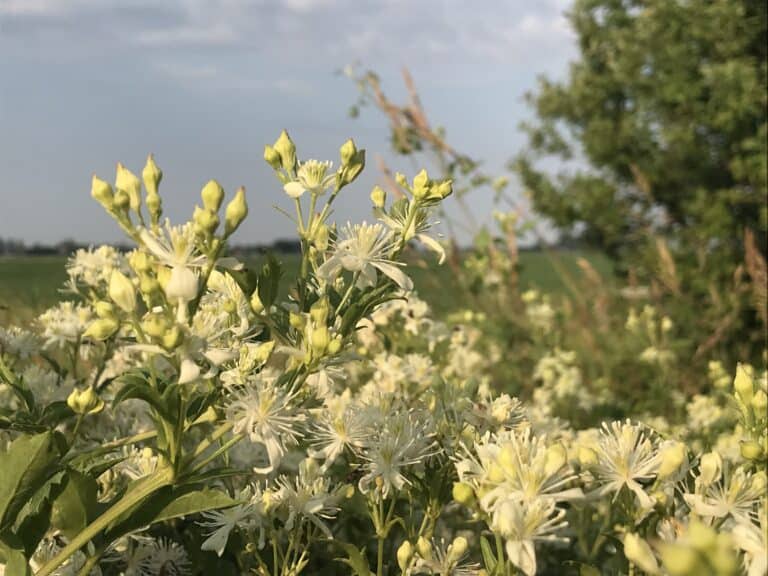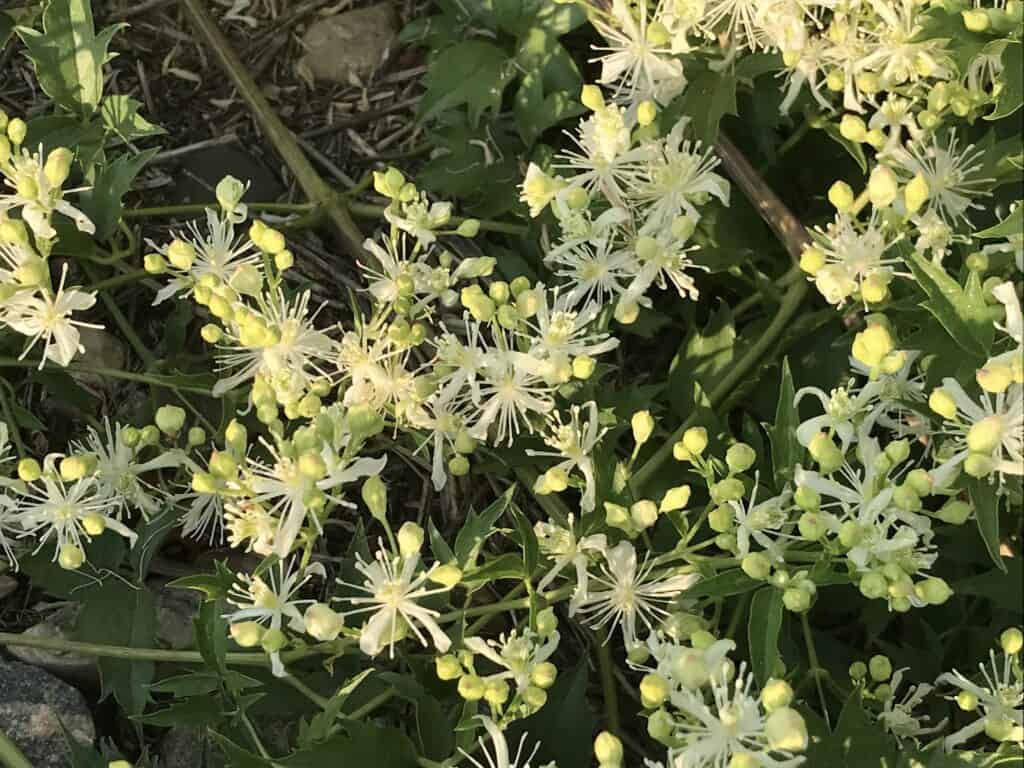
Creating a vibrant and diverse wildflower garden is a wonderful way to celebrate the beauty of nature and attract a myriad of beneficial insects. One stunning wildflower that thrives in the southern Alberta prairies is Clematis ligusticifolia, commonly known as Western Virgin’s Bower or Western Clematis. In this blog post, we will explore the growing habits, water requirements, potential pests, insect life it supports, and when it blooms, to help you successfully incorporate this versatile plant into your wildflower garden.
Growing Habits
Clematis ligusticifolia is a perennial vine that is native to Western North America. It is well-suited to the southern Alberta prairie climate and is known for its vigorous growth and pretty white blooms. Because it is an aggressive grower and spreads readily by seed, this would not be a good plant for small spaces.
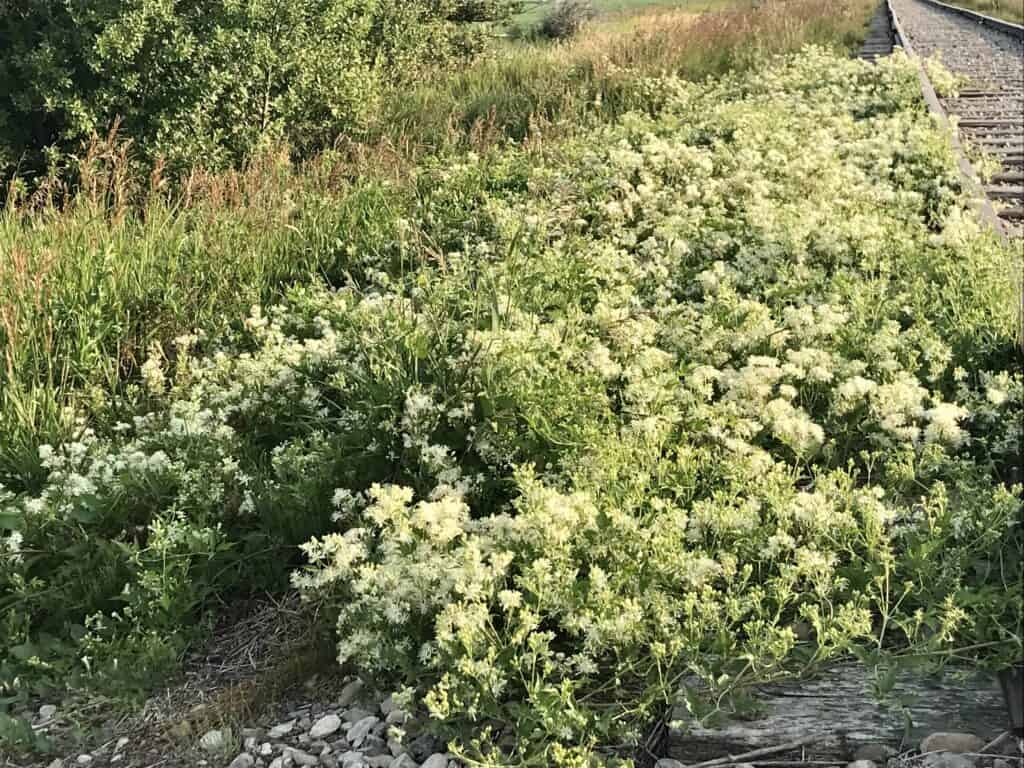
The plant typically reaches a height of 6 to 10 feet and features a twining, climbing habit. It can be trained to grow on trellises, fences, or other vertical structures, or left to sprawl across the ground, as you see in the above photo. However, I’ve most commonly seen it scrambling up and through shrubs, as below, near Lundbreck Falls in Alberta.
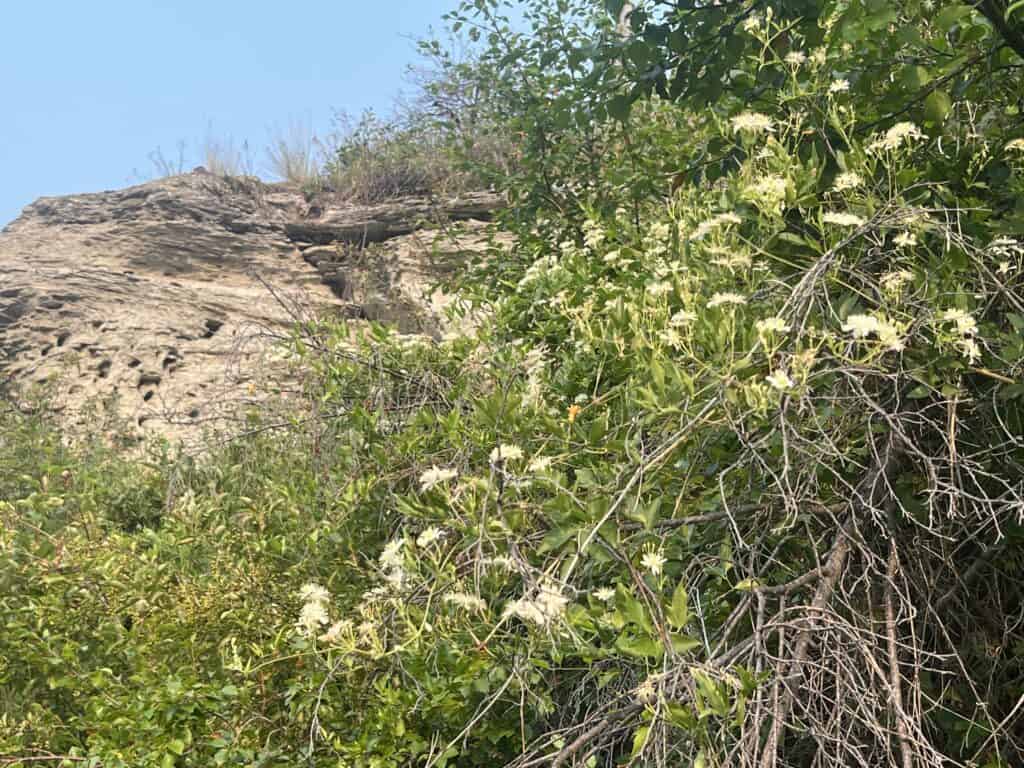
Water Requirements
In terms of water requirements, Clematis ligusticifolia is a relatively adaptable plant. It prefers well-drained to moist soil. During very dry periods, clematis benefits from regular watering. However, it is important not to overwater the plant, as excessive moisture can lead to root rot. Striking a balance by providing consistent moisture without waterlogging the soil is key to ensuring the health and vitality of your Western Clematis.
Pests
One advantage of incorporating Clematis ligusticifolia into your garden is that it is generally resistant to common garden pests. Although this plant may occasionally attract aphids or spider mites, hopefully your landscape is developed with lots of other native plants as well, which help to attract beneficial insects.
Regular monitoring of the plant and the use of organic pest control methods, such as spraying with a strong stream of water or introducing beneficial insects like ladybugs, can also help keep pest populations in check.
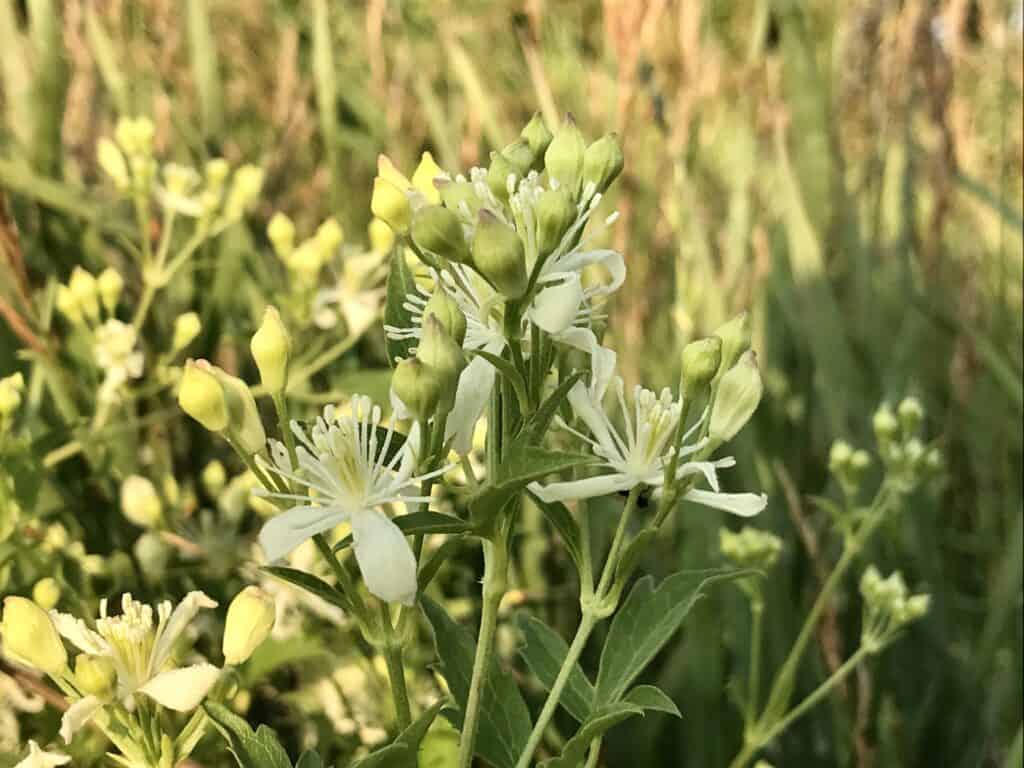
Insect Life
Clematis ligusticifolia is not only a beautiful addition to your garden but also an excellent source of nectar for a variety of insects. Its plentiful delicate white flowers, which bloom in late spring and early summer, attract pollinators such as bees, butterflies, and hummingbirds. These insects play a crucial role in pollinating other plants in your garden and contribute to a thriving ecosystem.
Blooming Period
The Western Clematis typically blooms from May to June, adding a burst of delicate white flowers to your garden during the late spring and early summer months. The flowers have a distinctive fragrance that further enhances the sensory experience of your outdoor space. As the summer progresses, the blooms give way to fluffy seed heads, which you may or may not appreciate the appearance of; see photo below!
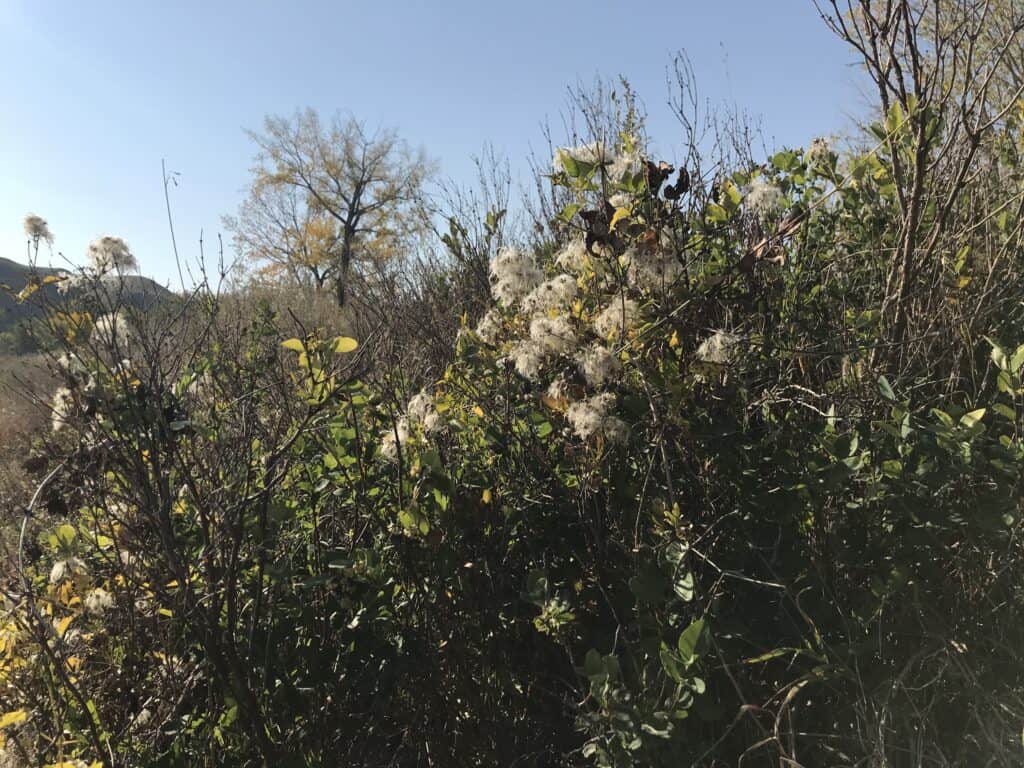
These are the seedheads of a clematis that has scrambled through shrubs at wetlands in Lethbridge. They do add a bit of whimsy and interest.
In Conclusion
Western Clematis’ climbing habit, attractive white flowers, and ability to attract beneficial insects make it a valuable addition to any native wildflower garden in the Southern Alberta prairies. By providing the appropriate growing conditions, regular watering, and monitoring for potential pests, you can cultivate a thriving Clematis ligusticifolia that will delight you and support a vibrant insect population in your garden.
Happy Gardening!

